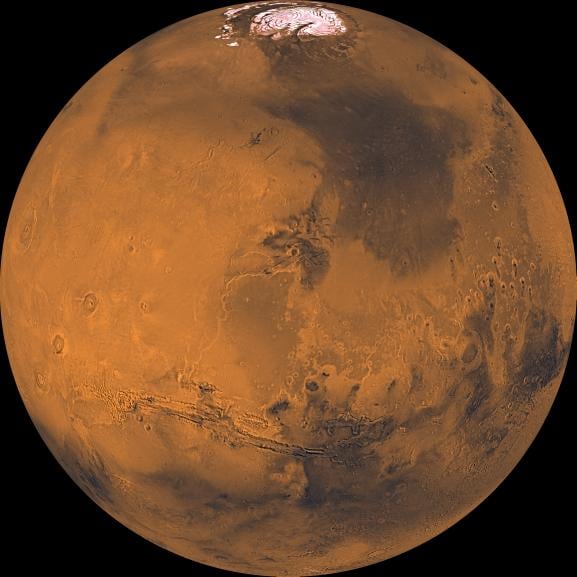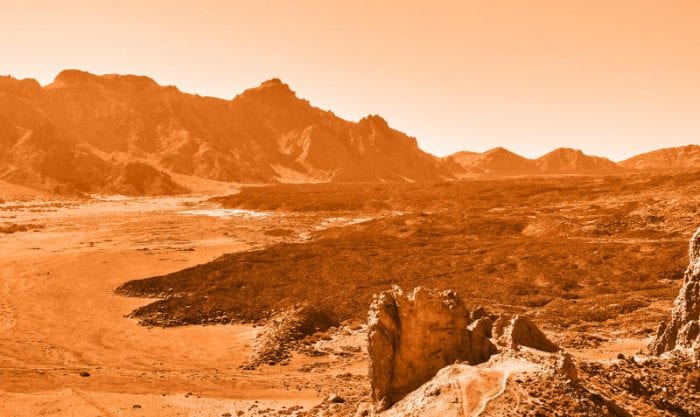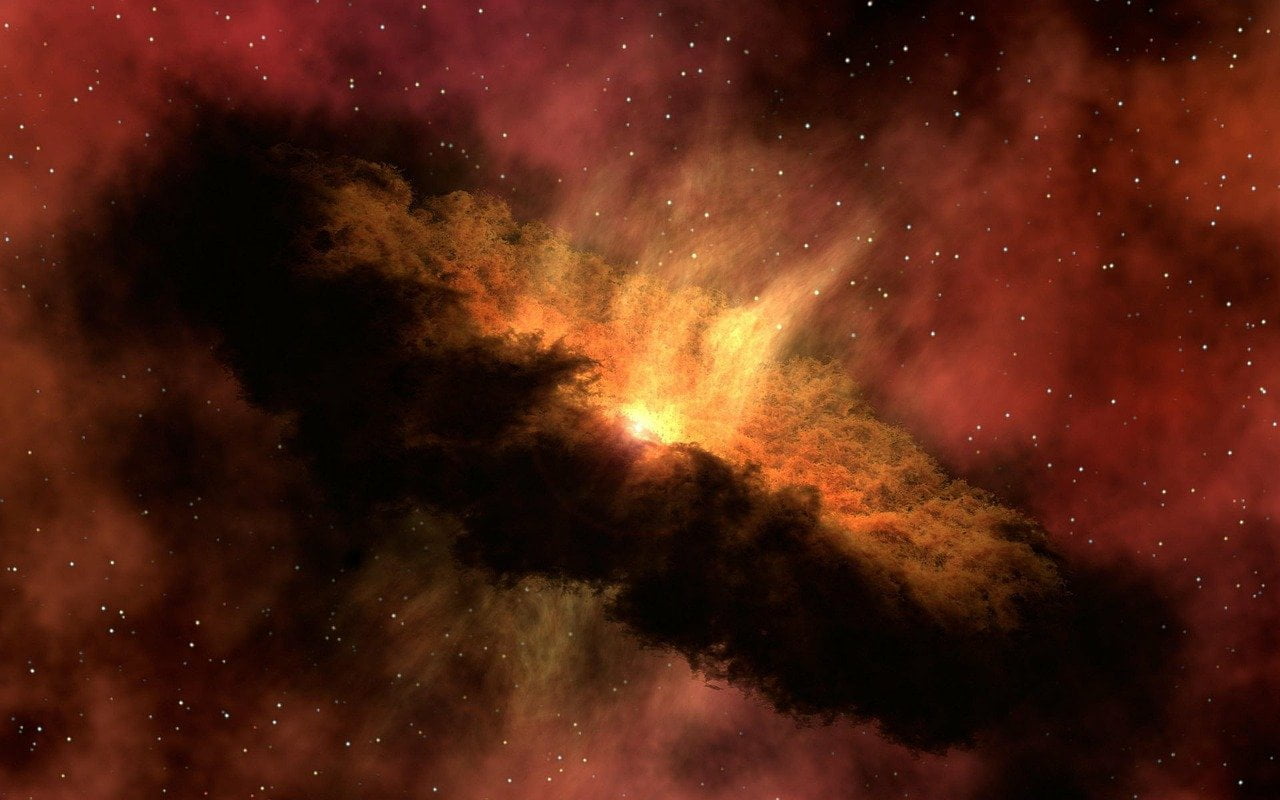As a celestial body, the red planet was known to the first civilisations to appear on Earth. But the first person to really study the planet was Asaph Hall, who also discovered two satellites of Mars, giving them the names Phobos (fear) and Deimos (horror), which happened in 1877 and since then scientists have not been bothered by this "bloody orb". So why are we so interested in Mars? And what are its characteristics and features? Will man ever be able to colonise it? Let's travel together to this mysterious planet.
Apart from the Moon, there is only one other planet on which we have sent robots on wheels: Mars, our spatial 'neighbour', if you can call a celestial body 228 million kilometres away on average, our neighbour. However, other planets are much further away and less "hospitable".

Why is Mars called the red planet?
You have of course already guessed that this planet is called red because of its hue, which arose due to the large amount of iron oxide on its surface, and it is this circumstance that gives it that characteristic colour recognizable to the naked eye in the night sky. But in fact "our neighbor" is a cold and inhospitable desert, with a thin and deadly atmosphere, temperatures that make survival impossible, and weather phenomena more destructive and terrible than all the deadliest tornadoes and tornadoes ever to have passed on Earth.
So why has such an unfriendly place been attracting genuine interest for decades? Well, it's because, as with Venus, it wasn't always like this. What is surprising is that life could have arisen on these two planets at the same time, over 4 billion years ago.
Like Earth, its 'neighbour' has seasonal cycles, ice polar caps, canyons and uncut canals that cut through the soil, all of which point to the ancient presence of water. It is thought that when the Red Planet was still young, it was filled with rivers and lakes not much different from those on Earth. The Curiosity rover, which has been working on the surface since 2012, has found rocks indicative of a watery past in Gale Crater, the rover's landing site, which must once have been a Martian lake. Several times filling up and shallowing, as happens with lakes on our planet. In addition, certain types of minerals and sediments found, could only have formed in the presence of liquid water.
So where did it all go? It is, once again, the atmosphere, that amazing shield. It is believed that somehow the atmosphere became depleted of oxygen and conversely saturated with carbon dioxide, at just 1% of the pressure of the air we breathe. All this played a part in the disappearance of water, which the planet could not 'hold' under the Sun's gravity.
But there is still water on the surface, deposits of it found beneath thick, icy, polar caps. Where life, however primitive, is quite possible. Other traces of liquid and salty water seem to be associated with streaks of wet soil that another NASA probe, the Mars Reconnaissance Orbiter (MRO), has photographed on the edges of Martian craters: water is thought to emerge from the ground and evaporate once it reaches the surface (if it does not freeze at average Martian -40 degrees Celsius, it is because the salts it contains reduce the freezing point).
Scientists suggest that the planet's 'wet' past had basic habitat conditions for at least a few hundred million years. Now the search is on for traces of bygone life, using scientific instruments that have been sent into the Red Planet's orbit and onto its surface. However, do not imagine Martians from the movies: Now, if life is detected, it is likely to be microbes capable of withstanding critical temperatures and lack of oxygen, perhaps there are some "refuges" under the surface. In some of Earth's deserts, where it rains once every 10 years, bacteria manage to survive and perhaps something similar happens there too.
Man on the planet Mars. Is this goal achievable?
On 26 November 2018, InSight landed, a lander (i.e. a 'static' robot that does not move on the surface); it will listen to the inner core of the Red Planet to find out if earthquakes are occurring. Over the next few days, InSight wowed the world by recording the sound of the Martian wind: listen to this voice of other worlds
As everyone understands, these are exclusively robotic missions. Human flight involves a number of major technological hurdles, starting with engines and fuel. In addition, there is the gruelling journey of at least six months and the fact that the two planets are on the move all the time, which means an accurate flight path must be calculated.
And then there's the problem of an "impossible" spacecraft landing in an atmosphere where even the lightest vehicles have trouble braking, not to mention the problems of survival - if we get there. We will have to learn how to produce oxygen and food locally, how to extract water. Because supplies will run out sooner or later, and also develop fuel production. And lastly, we will have to protect ourselves from the radiation we will be exposed to outside the Earth's magnetosphere, we will need a kind of 'shield' to protect us from the charged particles of the solar wind.
So far, the only one who has presented a more precise (but extremely ambitious) plan to achieve this goal has been Elon Musk, the "daddy" of the private space company SpaceX: he plans to make an attempt in 2024, using a colossal rocket as powerful as 400 big airliners, a spacecraft that will make several fuel "pit stops" along the way. Who knows, maybe in the future, we'll become an interplanetary race. If, of course, we learn to live in peace as a single species. Let's stop holding on to the illusion of material superiority and direct our gaze billions of kilometres into space, where a vast Universeawaits us, waiting for us to finally solve all our "minor problems" and join it.





 and then
and then 
